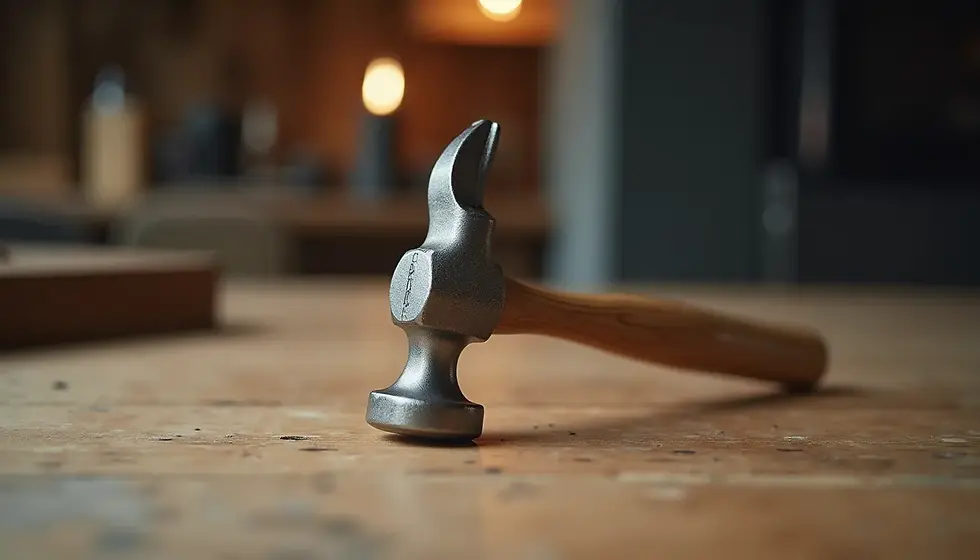How to Unclog a Drain with Baking Soda and Vinegar (That Actually Works)
- Mei-Lin Arora

- Sep 3
- 3 min read
Updated: Sep 7
A slow drain is like that one guest who overstays their welcome—quiet at first, then a real pain. Before you reach for harsh chemicals that smell like a science lab accident, try the old-school, eco-friendly combo: baking soda and vinegar. It’s cheap, safe, and surprisingly effective for most mild clogs.
Truth bomb: Baking soda and vinegar won’t eat through a year’s worth of hair cement. But for grease, soap scum, and minor blockages? They shine.
Why Baking Soda and Vinegar Work
Baking soda (sodium bicarbonate) is a mild base. Vinegar (acetic acid) is acidic. Mix them, and you get a fizzy reaction that helps loosen gunk, break down grease, and push soft debris along.
Baking soda deodorizes funky drains
Vinegar + fizz breaks down light buildup
Hot water rinse flushes the loosened debris

Step-by-Step: How to Unclog a Drain with Baking Soda and Vinegar
Boil water: Heat about 4–6 cups. Carefully pour half down the drain to loosen grease.
Add baking soda: About ½ cup straight into the drain.
Pour vinegar: Add 1 cup of white vinegar. Expect fizz, bubbles, maybe even a hiss.
Cover and wait: Place a drain plug or cloth to keep fizz in the pipe. Wait 5–10 minutes.
Flush with boiling water: Pour the rest of the hot water down to clear loosened debris.
Pro tipIf your drain smells like last week’s leftovers, this method doubles as a deodorizer.
When It Works Best
Kitchen sinks with grease or soap scum buildup
Bathroom sinks clogged with toothpaste or light soap film
Shower drains with mild hair buildup
For stubborn clogs, pair this with a plunger or a simple drain snake (manual auger). Both are inexpensive essentials you should keep around.
Golden ruleDon’t dump gallons of vinegar and expect miracles. This is a maintenance fix, not a plumber-in-a-bottle.

When Baking Soda and Vinegar Aren’t Enough
If the drain is fully blocked (standing water that won’t budge), this trick won’t cut it. You’ll need mechanical help: plunger, snake, or calling in the pros.
According to the EPA, avoiding harsh chemical drain cleaners protects your plumbing, septic systems, and the environment (EPA household chemicals guide).
Preventing Future Clogs
Install drain strainers to catch hair/food bits
Run hot water after greasy dishwashing
Monthly “maintenance fizz”: ¼ cup baking soda + ½ cup vinegar + hot water flush
Maintenance > Emergencies. Regular fizz treatments keep buildup away and your weekend free.
Conclusion: A Simple Fix for Everyday Drains
Learning how to unclog a drain with baking soda and vinegar is one of those small homeowner wins—cheap, green, and surprisingly effective for light clogs. Respect its limits, use it as regular maintenance, and save the plumber calls for the true disasters. 😅

FAQ
Does baking soda and vinegar unclog drains effectively?
Yes—for mild grease, soap scum, and minor buildup. It won’t clear solid blockages like heavy hair clogs.
How long should I let baking soda and vinegar sit?
About 5–10 minutes before flushing with boiling water.
Is it safe for pipes?
Yes, unlike harsh chemical cleaners, baking soda and vinegar are safe for metal and PVC pipes.
How often should I use this method?
Once a month as maintenance, or whenever the drain starts to slow.
What if it doesn’t work?
Use a plunger, drain snake, or call a plumber for stubborn or recurring clogs.



Comments